In a nutshell, Account Based Marketing (ABM) is a marketing tactic that flips the traditional sales funnel on its head. With ABM, B2B marketers don’t reach out to a wide audience, convert a small audience segment as leads, and then move these leads down a funnel. Instead, they start by identifying key accounts they want to target and move backward from there.
The way we look at it, ABM is a strategic way of taking your personalization efforts to the next level. You’re already segmenting your email list and crafting personalized email campaigns that are targeted to your different buckets of leads. Why not take it a step further, and deal with each account individually?
Account Based Marketing vs. Account Based Selling vs Account Based Prospecting

What’s the difference between Account Based Marketing, Account Based Selling, and Account Based Prospecting? The first two terms are essentially the same thing; that’s the act of first identifying key accounts, then attempting to sell to them using a 100% personalized pitch. Account Based Prospecting, on the other hand, simply deals with the first step of the process. Finally, there’s also the term “Key Account Marketing”; this is less widely used, but it refers to the same thing as ABM.
Key Benefits of Account-Based Marketing
Companies that use ABM strategies enjoy shorter sales cycles and find it easier to retain their customers. They can also align their marketing and sales teams more effectively, and stand out from their competitors. Read on to find out more!
Shorten sales cycles
Statistics show that the average B2B purchase requires 5.4 people to formally sign off. Assuming you’re doing things the old-school way (and marketing to a single lead), this means you’ll have to grapple with a long-drawn-out sales cycle.

Think about it: after you get into the good books of your lead, they’ll rope their colleagues into the picture, and you have to jump through the hoops again. Once you convince these other people, you might then need to speak to the CFO or the Finance team, and that complicates and prolongs the process yet again.
Luckily, there’s an easier way to do this. Switch to ABM, where you’re targeting accounts instead of individual leads. This way, you start by addressing all the decision-makers together. This helps you shorten your sales cycle and streamline the sales process.
2 Keep marketing and sales teams aligned
In most companies, marketing and sales teams aren’t on the same page. At best, the two teams might work as separate entities; at worst, they might be at loggerheads and constantly try to undermine each other. As you might imagine, this breeds unproductivity and inefficiency.
Switching to an ABM approach can help marketing and sales teams bridge the gap. More specifically, studies show that 91% of ABM marketers say that they are either “tightly” or “somewhat or moderately” aligned with their sales colleagues.
How does ABM help marketing and sales teams to see eye to eye? Since ABM puts the customer at the forefront, it forces your employees to come together to define and agree upon the ideal customer profile. With ABM, you’re targeting accounts that have been prequalified and determined to be a good fit. This eliminates the possibility of the sales team returning to marketing, with the grouse that the leads they’ve been fed aren’t high-quality.
3 Stand out from competitors
Most marketers rely on lead magnets and other forms of content to reach potential customers. This strategy might have been particularly effective five to 10 years back, when few companies invested in valuable, insightful content. But today, the benchmark is drastically higher, and pretty much every B2B company is creating great content. Considering this, it’ll be hard to entice potential customers with a standard eBook or whitepaper.

That’s where ABM comes in. With ABM, you’re not creating a few generic lead magnets and hoping that your target audience will bite — instead, you’re coming up with a content strategy or pitch that’s customized and personalized for each account. By taking this approach, you can ensure that your offer is highly relevant and that you target your leads’ pain points laser-focused. This makes it easier for you to stand out from the crowd and capture your customer’s attention and interest.
4 Better customer retention
Last but not least, companies who utilize ABM strategies find it easier to retain and expand their existing client relationships. Why is this the case? As we mentioned previously, ABM involves putting the customer at the forefront. Since ABM marketers focus on building a relationship with their customer and personalizing the offer to serve the customer’s needs better, this sets the stage for a closer working relationship and higher retention rates moving forward.

Remember: acquiring a new customer costs five times more than retaining an existing customer, and simply focusing on generating new customers isn’t a sustainable strategy for the long-run. That’s why it’s important to build relationships with customers (using ABM strategies!) and keep them around for the long run.
ROI of Account-Based Marketing
If you’re wondering why ABM is so popular, it’s because this approach is proven to generate positive ROI.
First and foremost, B2B customers who perceive supplier or vendor content to be tailored to their specific needs are, on average, 40% more willing to buy from that vendor. On an intuitive level, this makes sense — buyers would naturally want to purchase from a vendor or company that puts more effort into serving them and understanding their needs.

The numbers check out on the other side, too, with 80% of marketers who measure ROI saying that ABM initiatives outperform other marketing strategies and investments. On top of that, 60% of marketers who have used ABM for at least a year report a revenue increase of at least 10%, and 19% of these marketers report a revenue increase of 30% or greater.
Why does ABM contribute to a better bottom line? The benefits we talked about earlier (ABM shortens sales cycles and it increases customer retention) play a role. Another important factor is how ABM allows companies to focus on the 20% of their customers who generate 80% of their revenue. (For those unfamiliar with this concept, check out Pareto’s Principle).
In essence, ABM is all about being selective and focusing your efforts on the high-potential, high Customer Lifetime Value (CLV) customers. Going for quality, not quantity, will pay off in leaps and bounds: companies who utilize ABM approaches tend to increase their average contract value by 35% to 40%.
Which businesses should use Account Based Marketing?
Back when ABM was new, it was very much restricted to enterprise-level organizations with significant manpower and resources. After all, if you’re a small company with limited time and resources, it is difficult for you to personalize your outreach to each account you’re hoping to land.
However, that’s no longer the case now that ABM has matured. Plenty of tools and resources help companies automate part of their ABM efforts, making utilizing ABM feasible even for smaller companies. Bearing this in mind, ABM is now a great option for companies of all sizes.
How to use UpLead for Account Based Marketing
The most challenging part of ABM is identifying the key accounts (and the associated decision-makers) you want to target, but UpLead simplifies this task.
In a nutshell, UpLead is a lead generation platform that allows you to quickly and easily find leads and accounts to target. Read on to find out how to use UpLead to identify high-value accounts and leads for your company.
Lead generation doesn’t have to be all that painful. With UpLead, you can easily connect with high-quality prospects and leads to grow your company.
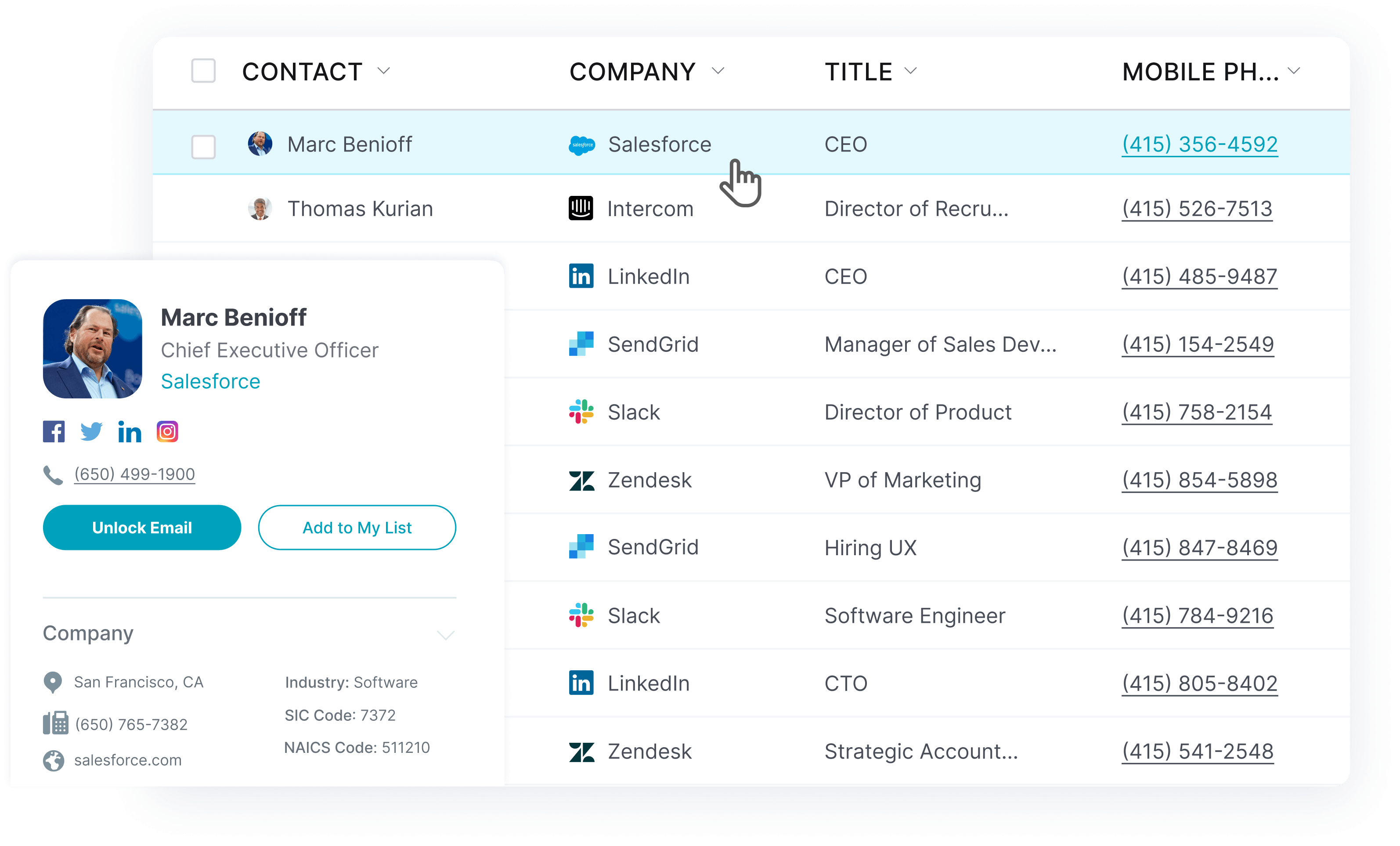
Step 1 Identify your accounts
The first step of the process is to identify the accounts or organizations you want to target.

To do this, do a deep-dive with your team and identify common patterns among the clients that bring you the most revenue. Now, this is pretty similar to coming up with a Buyer’s Persona, but keep in mind that you’re looking to target an entire organization, not a specific lead or person.
Some factors that you might want to consider include industry, company size, number of years established, geographic location, annual revenue, and profit margin.
Step 2 Identify key decision makers
Once you’ve identified the accounts you want to target, it’s time to hone in on the key decision-makers who you can reach out to. This step is all about online research, so look at each account’s website and see if you can find their organizational chart, and check out people affiliated to the account on LinkedIn.
Step 3 Use UpLead to sift our contact information
Now that you know who are the key decision makers in each account, it’s time to dig out their contact information. Don’t worry. You don’t need to trawl through the web and hunt down each person’s email address and contact information; you can use UpLead.
First, head over to UpLead’s website, and click on the “Free trial” button at the top.
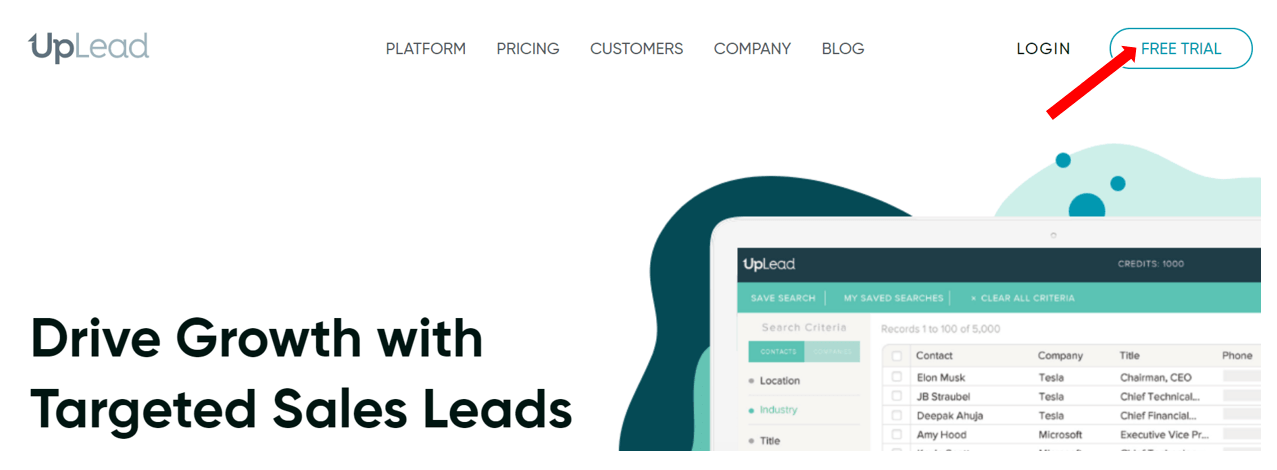
Once you confirm your account, you can access UpLead’s dashboard. Click “By Company URL” on the left-hand panel from here, and then enter the relevant URL in the text box.
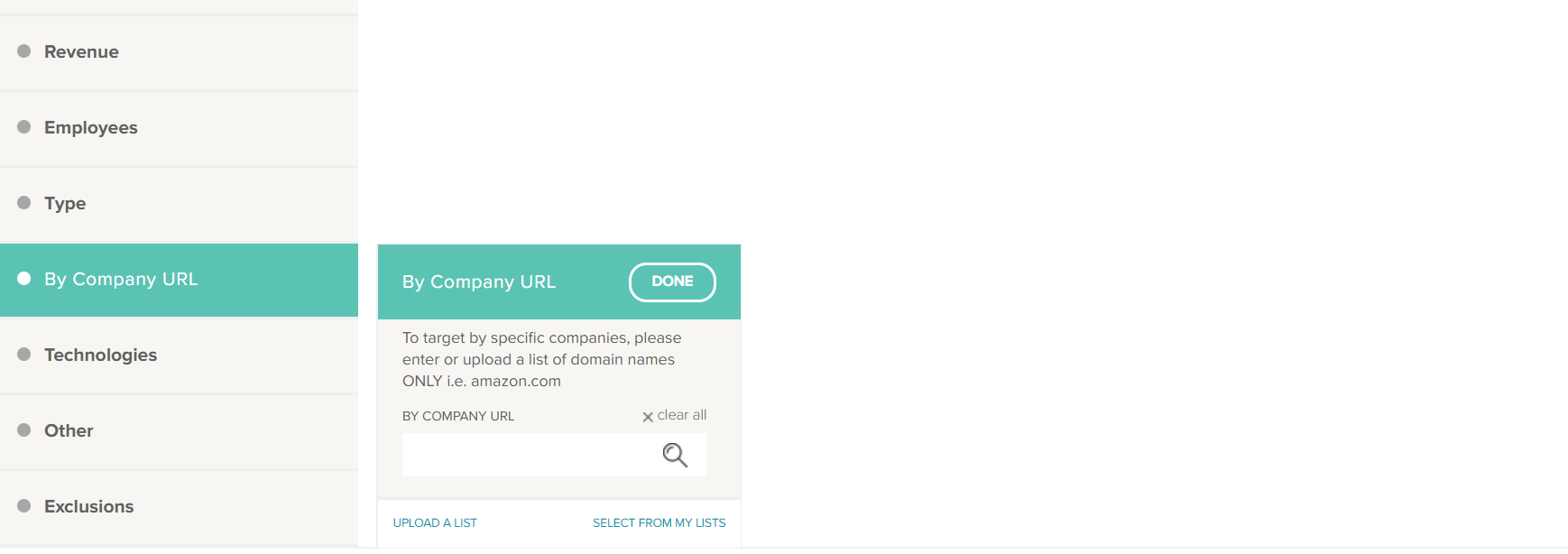
Say one of the accounts you want to target is HubSpot, for example. Simply input “HubSpot.com”, and UpLead will generate a list of contacts in HubSpot for you:
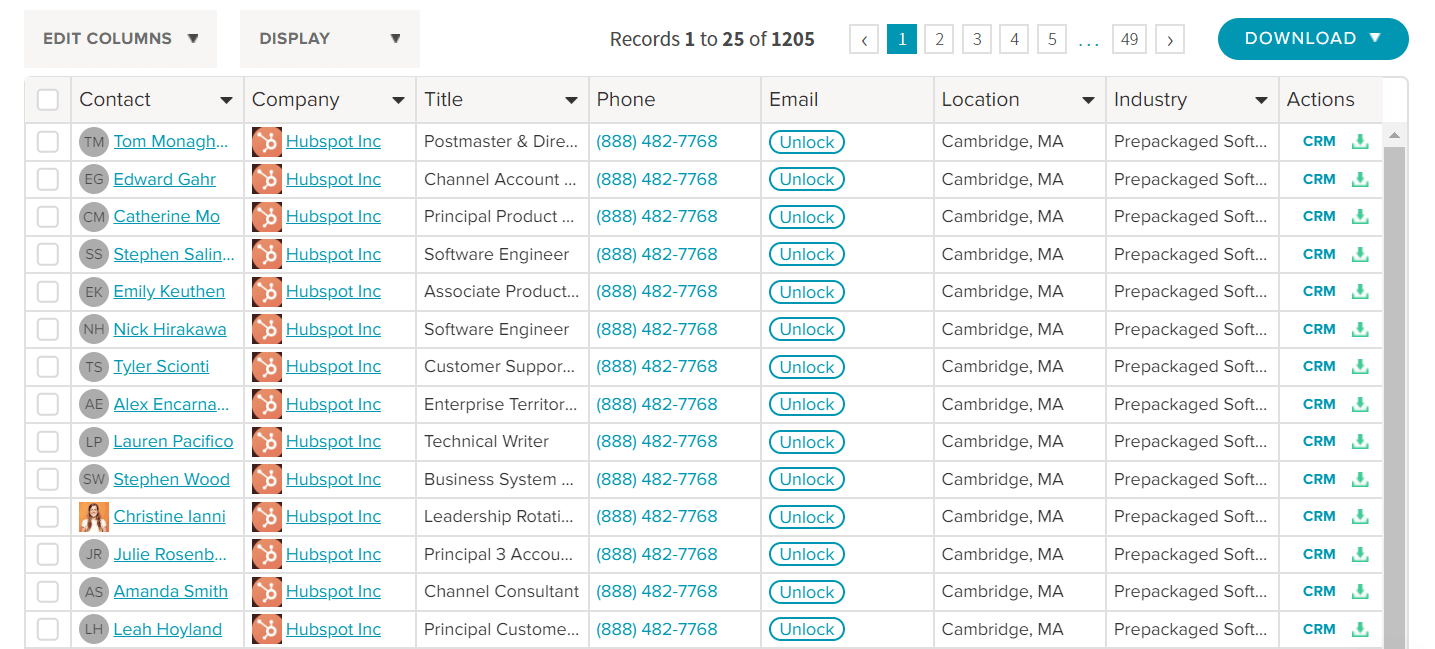
Now, there are 1,205 contacts in this list, so you’d probably want to narrow it down. To do this, click on “Title” from the left-hand panel. From here, you can narrow down your list based on Job Title, Job Function, or Management Level.
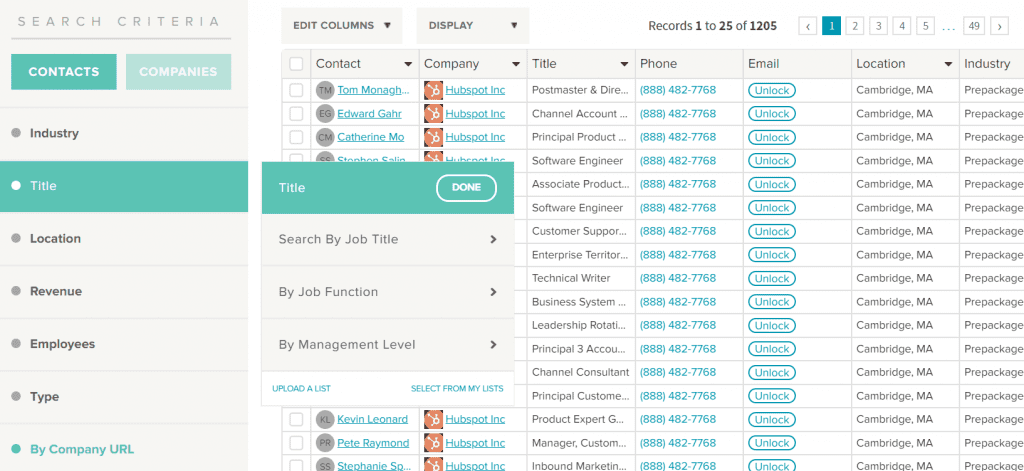
Once you’ve narrowed down your list of contacts, you can click on each contact’s name to find out more about them.
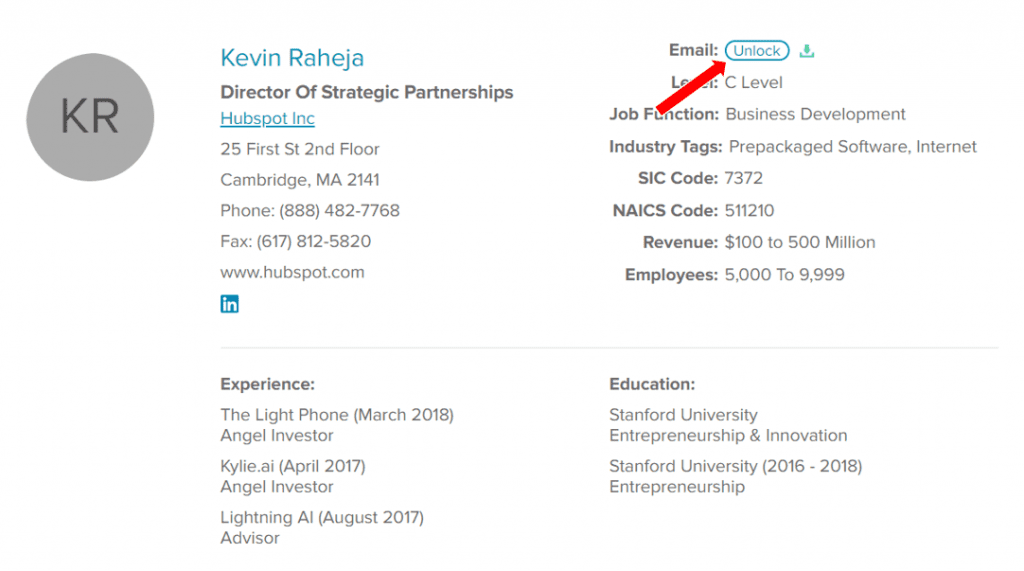
You’ll be able to see their phone number here, but if you want their email address as well, you’ll need to use a credit to “Unlock” it. To do this, click on the “Unlock” button as shown in the above screenshot. You can also click the “download” icon next to the button; this will allow you to export the lead’s information to your CRM system, or download it in an Excel file.
BONUS: Identifying more accounts to target using UpLead
Apart from using UpLead to access the contact information of the decision-makers you want to reach out to, you may also use it to identify alternative accounts to target.
To do this, simply switch from the “Contacts” to “Companies” tab, and then input your search criteria.
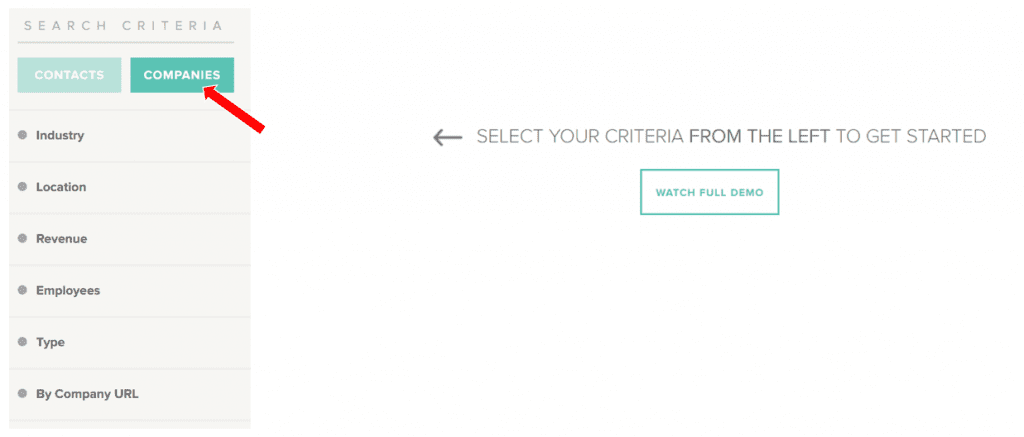
You have 50+ different criteria to play around with, including:
- Industry
- Industry Category
- Industry Name
- SIC Code
- NAICS Code
- Title
- Job Title
- Job Function
- Management Level
- Location
- Country
- State
- County
- Metro Area
- City
- Zip Code
- Sales Revenue
- Number of Employees
- Type of Company
- Public, Private, Education, Government or Non-Profit
- Fortune Ranking
- Alexa Ranking
- By Company URL
- Technologies Used
- Presence of Social Links
- Year Founded
Once you’ve narrowed down your list, you can click on the company name to learn more about the company. Alternatively, click on the number under “Contacts available” to view the contacts within each company.
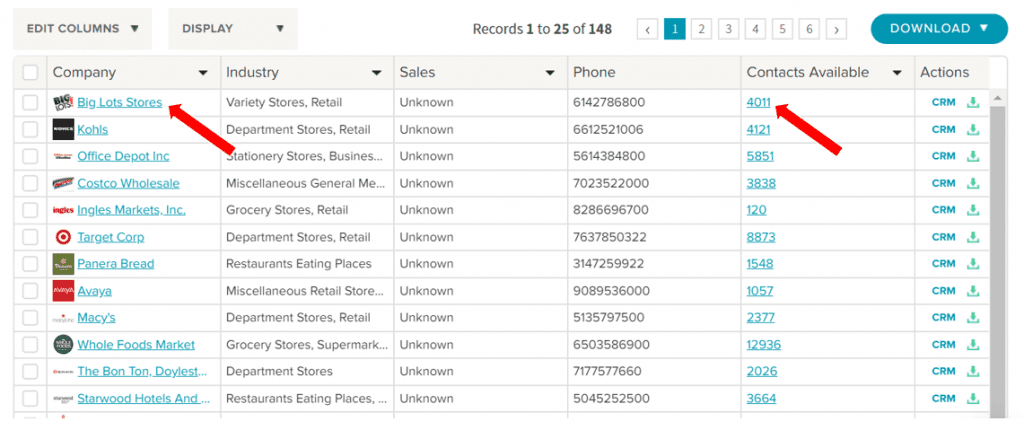
Step 4 Create personalized content to target each account
Now that you’ve identified your leads (and get their contact information), all that’s left to do is come up with personalized content so that you can start pitching. If you need some inspiration, check out these 6 effective ABM examples.
Growing your company with Account Based Marketing
If you’ve been struggling to generate leads for your company, you’ll probably find more success using ABM. This approach allows you to focus your efforts on getting the highest-value customers on board, which will in turn, help you scale up your average contract value and Customer Lifetime Value. Plus, with UpLead, identifying accounts and key decision-makers to target will be a breeze.







